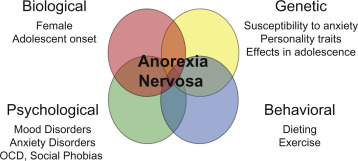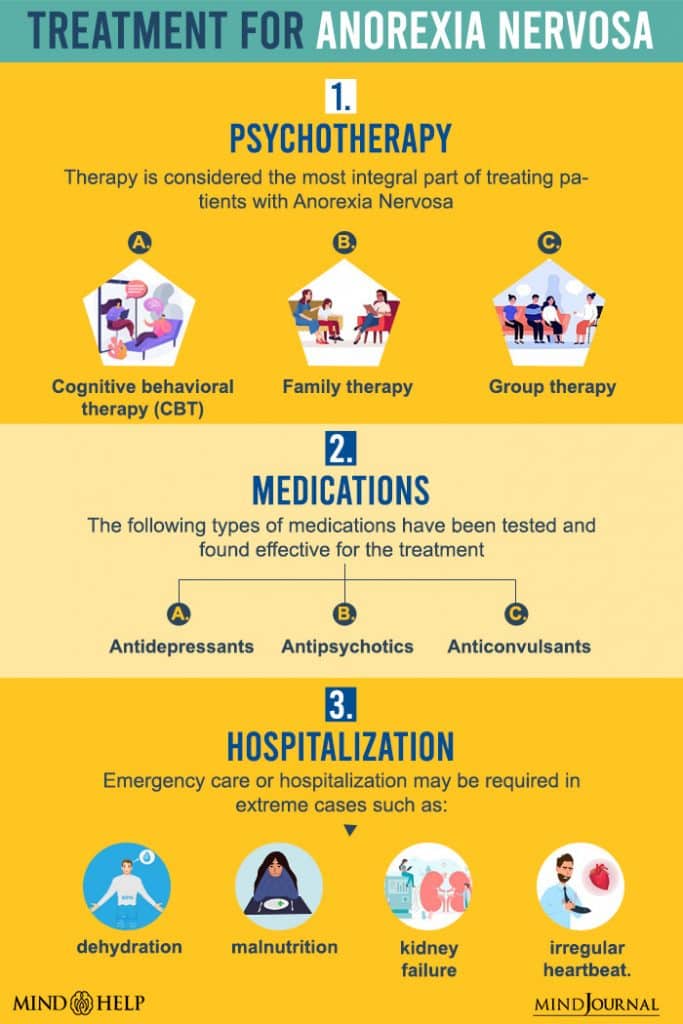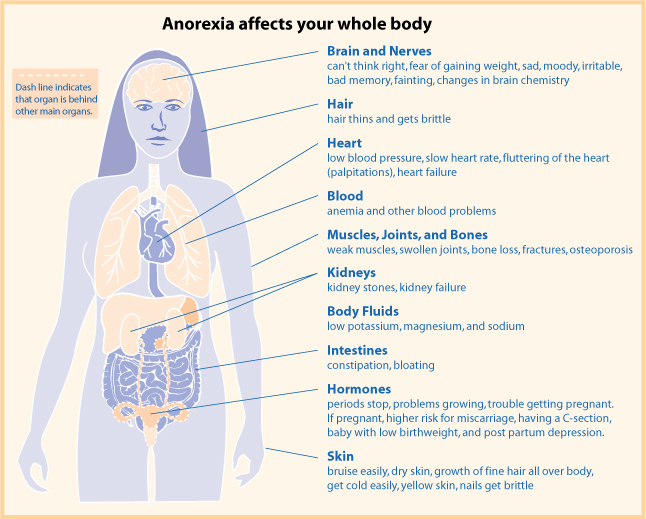Anorexia Nervosa
WHAT IS ANOREXIA NERVOSA? Anorexia nervosa is sometimes mistaken for anorexia which simply means the loss of appetite due to a disease. Anorexia nervosa is a disorder acquainted with feeding associated with fear of adding weight. In this case, the size of anorexic people does not matter as they have a restrained urge to eat […] Read More
Top Doctors For Anorexia Nervosa Treatments
Top Hospitals For Anorexia Nervosa Treatments
Anorexia Nervosa
Table of contents
What is Anorexia Nervosa?
Anorexia nervosa can be mistaken for anorexia. It is an appetite loss caused by a condition. Anorexia nervosa is a condition that is associated with eating and the fear of gaining weight. In this case, the size of anorexic people does not matter as they have a restrained urge to eat as they tend to feel fat. They tend to feel overweight when eating, while they are underweight and thin. The misconception anorexic people have makes them consume small quantities of food, select only specific meals to eat, exercise more often than usual, vomit on purpose and go as far as utilizing laxatives to speed up digestion. Anorexia nervosa can therefore be classified as a mental health condition and can pose as a serious life-threatening situation.

What are the types of anorexia nervosa?
- Binge/Purge Type
Some persons with this disorder tend to feel the need to purge immediately after consuming a meal. It relieves the phobia of the addition of weight or a forbidden diet. Exercising more often than usual, vomiting, and excess usage of laxatives are seen as countermeasures for the people diagnosed with the binge/purge type of anorexia nervosa.
- Restrictive
The people diagnosed with the restrictive type of anorexia are said to have an immeasurable depth of self-discipline. They limit their intake of meals with large calories and a high quantity of sugar. Therefore, they feed on meals with lower calories to feel satisfied and maintain a balanced weight.
Causes
Anorexia nervosa does not have a specific cause, but it has several factors contributing to the disorder ranging from emotional distress to genes to biological factors or the environment.
Anorexia nervosa tends to occur in people who are not comfortable with their body shape, looking forward to attaining perfection in their body image.
Factors considered as being responsible for anorexia nervosa are explained briefly below:
Biological Effect
The gene present in the system or hormonal imbalance is said to have the probability of causing anorexia nervosa.
According to research, there is a chemical secreted by the brain known as serotonin. This chemical is proposed to be linked with anorexia.
Also, most persons may feel the need to attain perfection and have a great sensibility and perseverance, all attributed to the gene.
Other cases can be hereditary, referencing depression history, previous cases of such disorder, and type 1 diabetes.
Environmental Effect
Factors influencing anorexia nervosa about the environment are mostly caused by unnecessary degrading of a body image by other people in society.
Also, pictures posted on social media, movies, and fashion shows can ignite the zeal to lose weight and try to keep in shape. Trauma resulting from sexual abuse can also cause anorexia nervosa.
People with low self-esteem also tend to experience the disorder along with anxiety, trying to fit into norms, experiences of body shaming, and bullying due to shape and size.
Psychology
Obsessive-compulsive disorder (OCD) is another factor affecting the mental state as it tends to make a person regulate their diet. This is the same case for an anorexia nervosa patient due to obsession and compulsion.
What are the risk factors for Anorexia Nervosa?

Anorexia nervosa is discovered to be more current in the female gender, mostly younger ones, than in males. However, the disorder tends to occur in the male gender due to the pressure developing from a society that springs up low self-esteem that ignites anorexia. Though the disorder is mainly susceptible to young adults, it can affect anyone of any age grade, and all these are attributed to puberty, criticism, and slamming on weight or shape of the body.
Symptoms
From the meaning of anorexia, it can be easily deduced that the major sign and symptom of anorexia nervosa is the loss of weight. Though, it is not so in all cases as some tend to maintain a moderate weight which is known as the “atypical anorexia nervosa. “
Vomiting and abusive use of laxatives purging can also be seen as signs.
It can be hard sometimes to detect the signs and symptoms because people have different conceptions of the term “body image” as not all individuals assume the same weight. . Some persons might look thin to some people and still look fat to others, i.e., everyone having their definition of thin.
The signs and symptoms are classified into physical, emotional, and behavioral. They are categorized below:
Physical Symptoms
- Severe loss of weight without any observatory addition of weight.
- Appearing lean.
- Irregular blood.
- Weakness.
- Inability to sleep.
- Loss of body color toning
- Fainting.
- Falling of hair in most cases.
- Inability to menstruate.
- Pain in the abdomen.
- Constipation.
- Irregular heartbeat rhythm.
- Reduction of blood pressure.
- Frequent dehydration.
People diagnosed with anorexia binge and purge can be compared to people with bulimia with disparities in body weight as the people with bulimia have normal or greater body weight.
Emotional and Behavioral symptoms
- Affected persons tend to prepare sumptuous meals for others without eating themselves.
- Making up excuses to avoid eating meals.
- Refusing to accept the fact of being hungry
- Having preferences for only specific meals and making a dietary plan for meals poor in calories and fat.
- Spitting out a meal after a series of chews.
- Inability to eat while in Public.
- Thorough monitoring of weight to avoid the addition of weight.
- Staring in the mirror always to ensure no weight has been added.
- No Emotions.
- Self-reservation.
- Loss of sexual urge.
How is Anorexia Nervosa diagnosed?
Persons diagnosed with anorexia nervosa in its early stages can result in early recovery. Sometimes, tests are carried out whenever symptoms are found. Questions are also asked about diet and weight. According to the National Eating Disorder Association (NEDA), certain criteria can aid doctors in conducting a diagnosis. They are listed below:
- Low weight for any sex, age, and health.
- Fear of adding weight.
- Restricting excess intake of food.
Other tests include:
- Physical examination- during this examination, the doctor will examine the patient thoroughly. Will check the patient’s vitals such as blood pressure, pulse, heart rate, skin tone, weight, height, and overall appearance. The doctor will also record the medical history of the patient.
- Lab tests- include blood parameters, electrolyte check, liver function test, and kidney and thyroid tests.
- Psychological evaluation
- Other tests include an x-ray scan to evaluate the bone density, check for stress fractures or bone density, ECG to check for heart irregularities, etc.
How is Anorexia Nervosa treated?

The different therapies for anorexia nervosa include individual, family, and group therapies. Other forms of treatment include medications, nutritional counseling, and hospitalization. These are explained below:
- Medication
Currently, there are no specific medications for anorexia nervosa, but antidepressants can be prescribed to reduce anxiety or depression, which are acquainted with anorexia nervosa.
- Hospitalization
In this case, close monitoring of the patient by the doctor is required to study the stages of anorexia nervosa. In addition, immediate hospitalization is required for medical conditions such as severe dehydration, severe malnutrition, severe psychiatric issues, or continued refusal of food intake.
- Nutrition counseling
This counseling involves lecturing about healthy diets and food to regain the normal feeding process. In the sessions, nutrition and a balanced diet are greatly emphasized.
- Psychotherapy they include
- Family-based therapy- this kind of therapy is useful for teenagers who cannot make the right choices about eating and health. Also called as Maudsley method.
- Individual therapy- is best suited for adults. Also called cognitive behavioral therapy.
- Interpersonal psychotherapy
- Psychodynamic psychotherapy- it involves looking at the root cause of anorexia.
What are the complications associated with Anorexia Nervosa?

Anorexia disorder can have different complications, but it is more detrimental in a few cases as it can lead to sudden death even if the affected person is not underweight. This can be caused by an electrolytic imbalance or irregular heartbeat and a lack of certain minerals that balance the fluid in the system. The complications associated with anorexia nervosa are listed below:
- Insufficient oxygen to transport oxygen to the tissues.
- The weakening of the bone may lead to fractures.
- Heart failure is feasible.
- Muscle loss.
- Testosterone decrease in men.
- Women do not see their period.
- The kidney starts developing issues.
Prevention
No prevention method has been established for this disorder though observing the symptoms can aid in early diagnosis. For example, any notice of obsession concerning weight should quickly be reported to a professional. In addition, teaching and encouraging kids regarding eating habits and realistic attitudes about food and body imaging might help prevent the worsening of eating disorders.
Mortality Rate
The anorexia nervosa has the highest rate of death occurrences among all other psychiatric disorders. As of 2015, anorexia nervosa was responsible for about 600 deaths.
FAQ
Which changes in vital signs suggest anorexia nervosa?
Loss of hair, weak breasts, and skin dryness are vital signs that can be observed when someone is diagnosed with anorexia nervosa.
Psychological treatments that can help sufferers with anorexia nervosa include individual and group therapy as well as family therapy.
What are the risks of delayed anorexia nervosa diagnosis?
Early discovery of the disorder in a patient is critical and reduces mortality as the death rate increases abruptly with time. In addition, early diagnosis can lead to higher chances of recovering from it.
Anorexia nervosa disorder can exist in most countries with certain stages of development. However, it tends to occur at a percentage range of 0.3-1% for women and 0.1-0.3% for men.
Both anorexia nervosa as well as bulimia nervosa are eating disorders. But, in the same way that anorexics tend to go on a diet that is extreme or skip meals, eat less or not whatsoever, or exercise too often to keep a good physique, people with bulimic disorders are more likely to overeat afterward, binge, purge or use laxatives to rid themselves of the food.
Anorexia nervosa can affect people of any age, gender (f>m), race, ethnicity, economic status, and individuals of all body shapes, sizes, and weights. Eating disorders affect almost 9% of the total population in the whole world, while anorexia affects about 1-2% of the total population. It affects 0.3% of adolescents [1].
Reference
https://my.clevelandclinic.org/health/diseases/9794-anorexia-nervosa



























































































